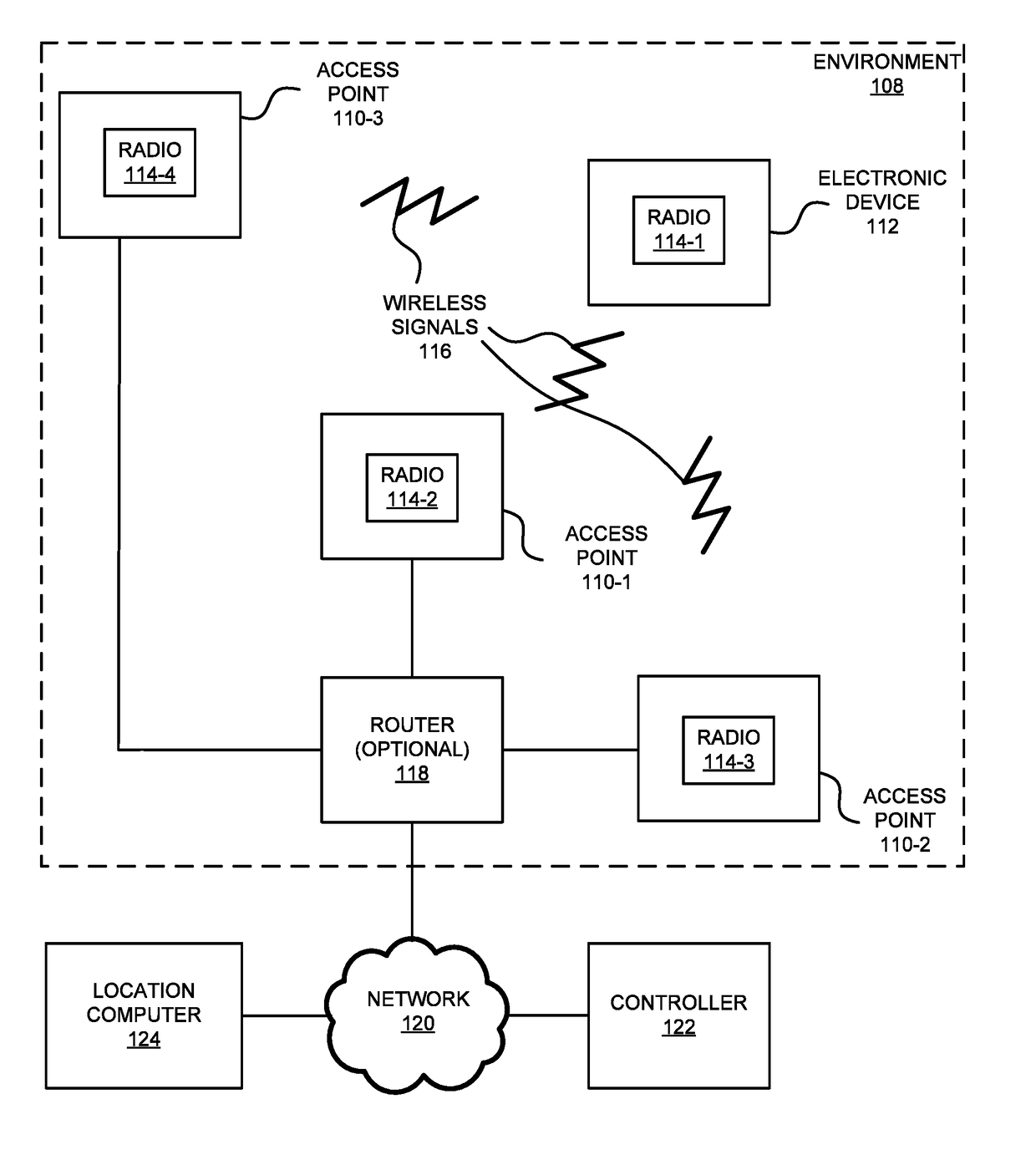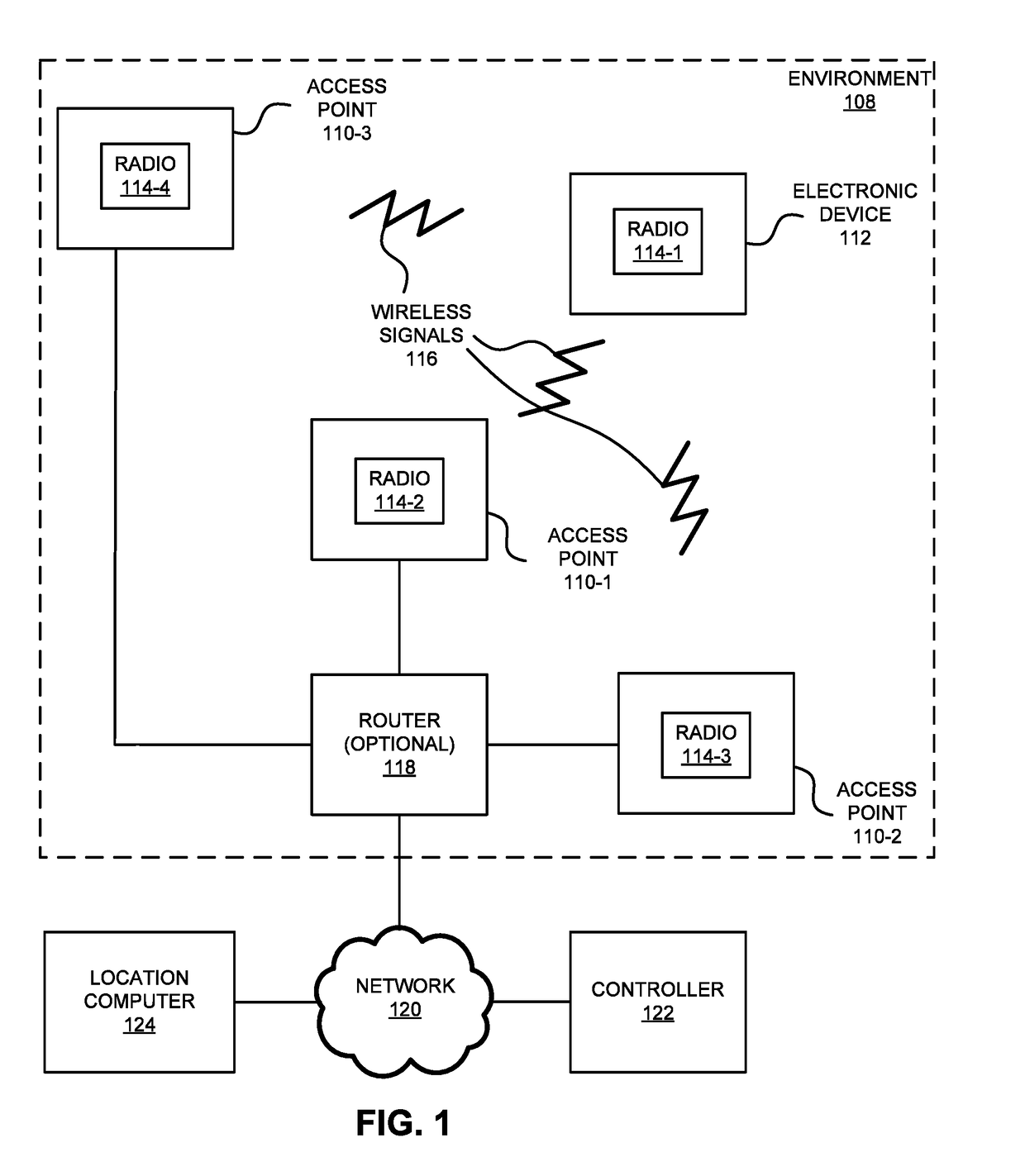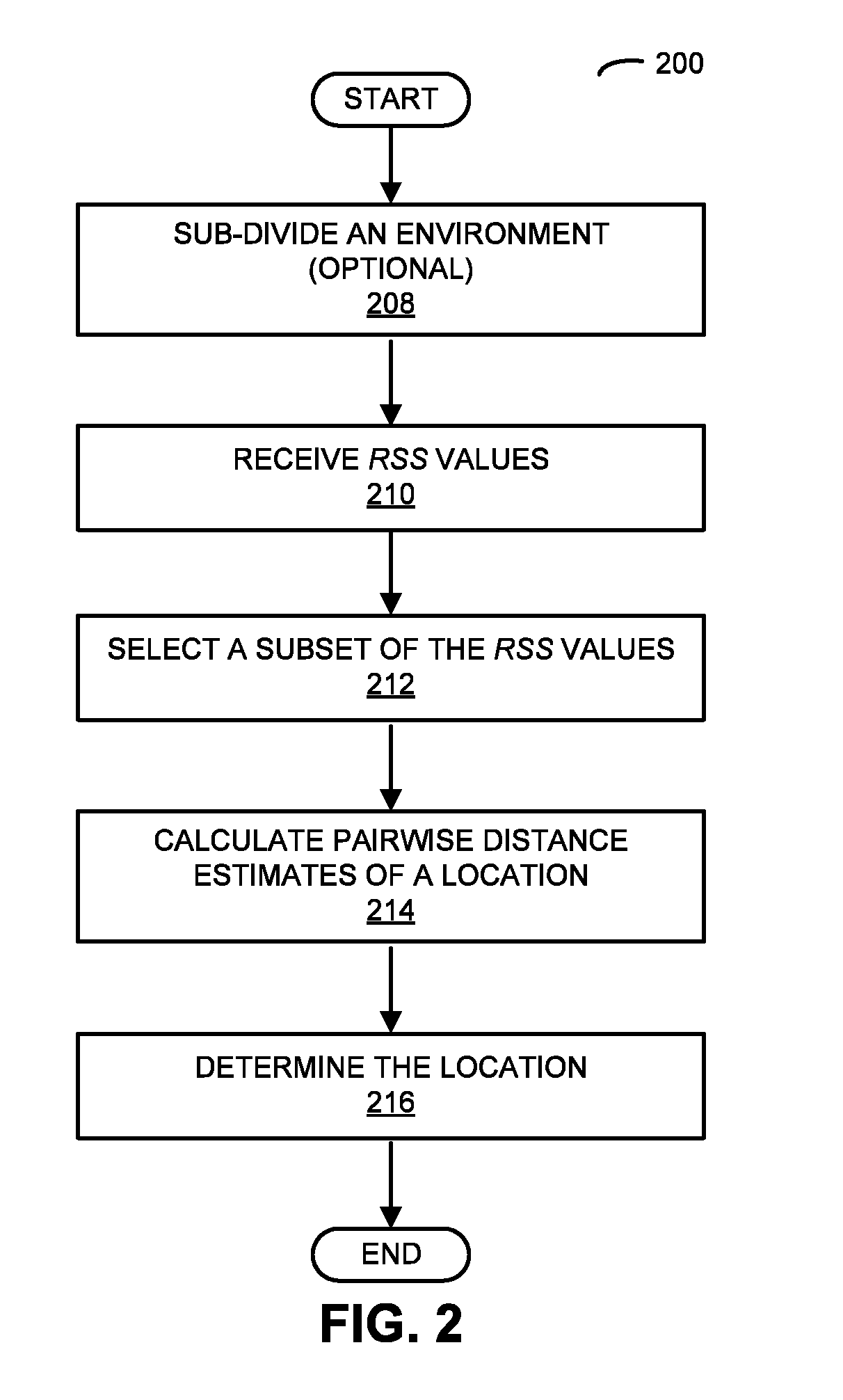Calibration-Free Location Determination Using Wireless Communication
a wireless communication and location determination technology, applied in the direction of reradiation, measurement devices, instruments, etc., can solve the problems of high computational complexity, special hardware requirements for and the performance of triangulation techniques based on these attributes is typically very sensitive to multi-path and non-line-of-sight effects
- Summary
- Abstract
- Description
- Claims
- Application Information
AI Technical Summary
Benefits of technology
Problems solved by technology
Method used
Image
Examples
Embodiment Construction
[0031]In order to accurately determine the location of an electronic device in an environment, a computer selects a set of received-signal-strength (RSS) values based on wireless communication between the electronic device and access points in sub-regions of the environment. This set includes a largest RSS value associated with a sub-region and at least two RSS values associated with neighboring sub-regions. Then, the computer calculates pairwise distance estimates of the location of the electronic device in the environment based on predefined locations of the access points associated with the set, one or more differences of pairs of RSS values in the set and a predetermined path-loss factor in the environment, where a given pair of RSS values includes the largest RSS value and one of the at least two RSS values. Furthermore, the computer determines the location of the electronic device in the environment based on the pairwise distance estimates.
[0032]The location-determination tech...
PUM
 Login to View More
Login to View More Abstract
Description
Claims
Application Information
 Login to View More
Login to View More - R&D
- Intellectual Property
- Life Sciences
- Materials
- Tech Scout
- Unparalleled Data Quality
- Higher Quality Content
- 60% Fewer Hallucinations
Browse by: Latest US Patents, China's latest patents, Technical Efficacy Thesaurus, Application Domain, Technology Topic, Popular Technical Reports.
© 2025 PatSnap. All rights reserved.Legal|Privacy policy|Modern Slavery Act Transparency Statement|Sitemap|About US| Contact US: help@patsnap.com



